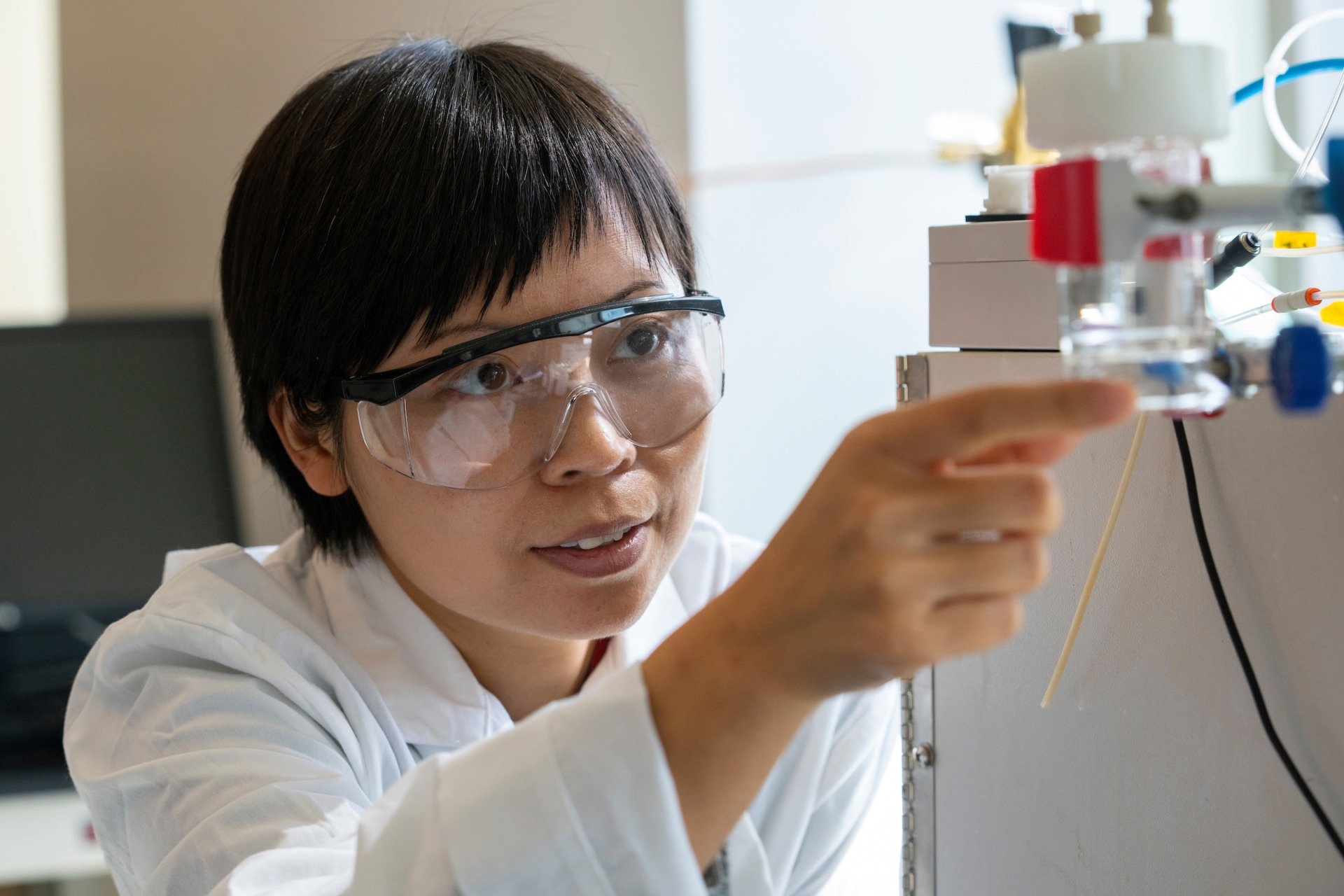Scientists from Texas A&M AgriLife Research have created a system that uses carbon dioxide, or CO2, to create bioplastics, which could replace the non-biodegradable plastics currently in use. The accumulation of non-biodegradable plastics and the reduction of greenhouse gas emissions are two issues that the research tackles.

Technology to produce bioplastics has been developed by Susie Dai, Ph.D., and a team of Texas A&M AgriLife researchers. Image Credit: Texas A&M AgriLife photo by Michael Miller
Susie Dai, Ph.D., Associate Professor in the Texas A&M Department of Plant Pathology and Microbiology, and Joshua Yuan, Ph.D., Former Chair for Synthetic Biology and Renewable Products in the Texas A&M Department of Plant Pathology and Microbiology and currently Lopata Professor and Chair in the Washington University in St. Louis Department of Energy, Environmental, and Chemical Engineering, collaborated on the research, which was published on September 28th, 2022 in Chem.
The John ‘90 and Sally ‘92 Hood Fund for Sustainability and Renewable Products, Texas A&M AgriLife, and Texas A&M University contributed to making the research possible.
Creating Bioplastics
According to Dai, modern petroleum-based plastics pose a serious threat to ecosystems and the oceans as they are difficult to break down.
The Texas A&M College of Agriculture and Life Sciences researchers and their teams spent nearly two years creating an integrated system that uses CO2 as a feedstock for bacteria to flourish in a nutrient solution and make bioplastics to address these concerns.
The Texas A&M Department of Plant Pathology and Microbiology’s Peng Zhang, Ph.D., Postdoctoral Research Associate, and Kainan Chen, Doctoral Student, both contributed to the work. For the integrated system, the Texas A&M University System has submitted a patent application.
Carbon dioxide has been used in concert with bacteria to produce many chemicals, including bioplastics, but this design produces a highly efficient, smooth flow through our carbon dioxide-to-bioplastics pipeline.
Susie Dai, Associate Professor, Department of Plant Pathology and Microbiology, the Texas A&M College of Agriculture and Life Sciences
“In theory, it is kind of like a train with units connected to each other. The first unit uses electricity to convert the carbon dioxide to ethanol and other two-carbon molecules—a process called electrocatalysis,” stated Dai.
She further stated, “In the second unit, the bacteria consume the ethanol and carbon molecules to become a machine to produce bioplastics, which are different from petroleum-based plastic polymers that are harder to degrade.”
Capturing and Re-Using CO2 Waste
Additionally, using CO2 in the procedure might assist in lowering greenhouse gas emissions as a waste product of many manufacturing operations is CO2.
Dai further added, “If we can capture the waste carbon dioxide, we reduce greenhouse gas emission and can use it as a feedstock to produce something. This new platform has great potential to address sustainability challenges and transform the future design of carbon dioxide reduction.”
The new platform’s main advantages are its higher energy efficiency and significantly faster reaction rate than photosynthesis.
Dai stated, “We are expanding the capacity of this platform to broad product areas such as fuels, commodity chemicals, and diverse materials. The study demonstrated the blueprint for ‘decarbonized biomanufacturing’ that could transform our manufacturing sector.”
Expanding Future Impacts
According to Dai, petroleum-based polymers are currently less expensive than bioplastics. However, if the technique is effective enough to generate bioplastics on a commercial scale, companies might switch out conventional plastic items for ones that have less of a detrimental influence on the environment.
Additionally, reducing CO2 emissions from energy industries like gas and electric facilities would be advantageous.
She concluded, “This innovation opens the door for new products if the bacterium is engineered to consume carbon dioxide-derived molecules and produce target products. One of the advantages of this design is the condition the bacteria grow in is mild and adaptable to industry-scale conditions.”
Journal Reference:
Zhang, P., et al. (2022) Chem-Bio interface design for rapid conversion of CO2 to bioplastics in an integrated system. Chem. doi:10.1016/j.chempr.2022.09.005.